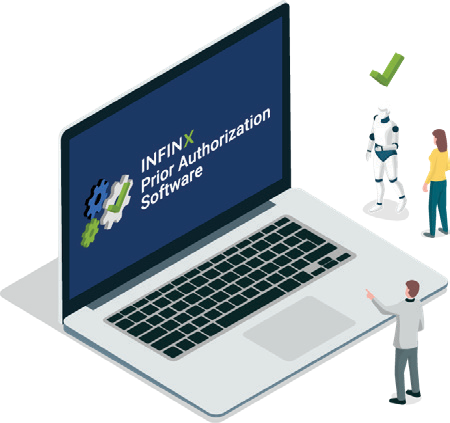White Paper
Advanced Solutions for Cardiology Patient Access

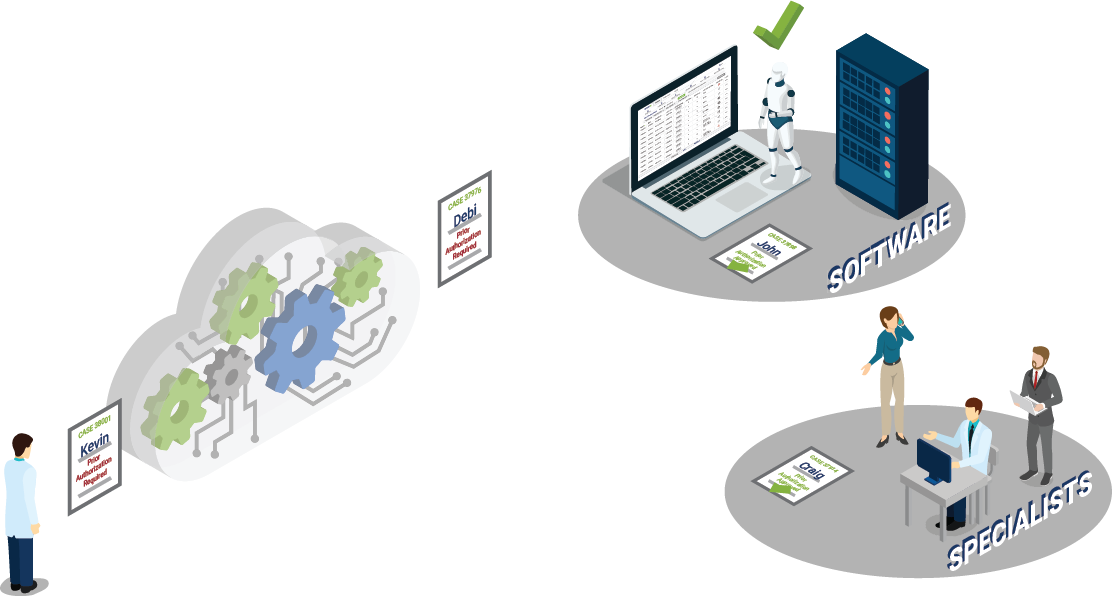
Executive Summary
When looking at the cardiology patient access workflow, every aspect creates a piece of the foundation for solid business operations — from verifying insurance details to prior authorizations to facilitating the Clinical Decision Support Mechanism (CDSM) process. For cardiology, artificial intelligence (AI) and machine learning capabilities used where appropriate, create a patient onboarding flow that improves the patient’s experience and brings revenue directly to the bottom-line.
Recognizing the current challenges, the Centers for Medicare and Medicaid Services (CMS) extended the mandatory CDSM implementation date to January 1, 20221. This extension is intended to give both ordering and furnishing providers ample time to negotiate the technological and workflow challenges before there is a monetary impact.
While there are answers and solutions to many of the challenges underway, the bottom line is that total electronic processing, including the use of artificial intelligence (AI) and machine learning capabilities, is an incomplete answer. There needs to be an augmented intelligence solution that marries machine automation and human intellect to realize the goal of efficient prior authorizations fully.
A Changing Patient Perspective
Patient consumerism is shifting the patient care atmosphere. Cardiology groups around the country are working to maximize the patient experience through their clinical successes and their approach to the healthcare payment lifecycle. This balancing act is relatively new and is playing out across the country with the new reality of patients being more active, and financially responsible, players in their healthcare.
High Deductible Health Plans (HDHP) are here to stay. They are increasing in popularity with each successive “open enrollment period” as employees look to reduce their monthly premium costs. HDHPs with annual deductibles of $6K or more per person sound like no problem when chosen, but often families don’t have accrued savings able to meet the limits should a member have something catastrophic occur.
What Exactly is Patient Access?
Patient access is the onboarding process that occurs as a patient is welcomed into a new practice. It’s critical to lay a strong foundation that ensures cardiology reimbursement is captured in a timely manner.
From the initial patient access point through Revenue Cycle Management (RCM), there is renewed interest in the efficiencies gained by automating redundant, time-intensive processes. For example, industry-wide, over 87% of prior authorizations (PAs) are still generated and submitted manually2 even though insurers could process them electronically.
Patient Access Defined by Function
Insurance Verification and Patient Eligibility
Whether a cardiology practice provides appointment scheduling with a live person, a call center, or a patient portal, this is usually the first opportunity to set the tone with your new patient regarding the expectations to follow in terms of RCM. Collecting accurate and current demographic and insurance information at this initial stage is crucial.
Accurate and current demographic3 and insurance information must be collected during the initial stage and used to onboard the patient into the cardiology reimbursement system to ensure valid billing information is obtained regarding:
- Insurance eligibility dates
- Co-pays and co-insurances
- Deductibles
- Secondary insurance and coordination of benefits
- In-network vs. out-of-network coverage
- Referral requirements
- Prior Authorization requirements
Without this key information, revenue reimbursement may be denied through the contracted insurance payers. Whether a cardiology practice pursues its RCM or contracts with a trusted third-party partner, having corrected, verified insurance and benefits information is pivotal to maximizing reimbursement.
Prior Authorizations
The PA process is probably the least appreciated function that takes place in any practice. It is rightfully seen as disruptive to the patient’s care and experience, a roadblock to necessary procedures and equipment (often determined after the patient encounter), and uncompensated use of physician and staff time4
A recent AMA PA Physician Survey5 found that 92% of patients experience a care delay due to requirements for PA. And equally troubling, a significant number of patients abandon care altogether, negatively affecting clinical outcomes.
As stated above, further complicating the PA process is the fact that according to the 2019 CAQH Index, only 13% of providers are using a fully automated electronic process6. This means that an average of 15 hours per provider of staff time per week is being used to process the required PAs7 manually
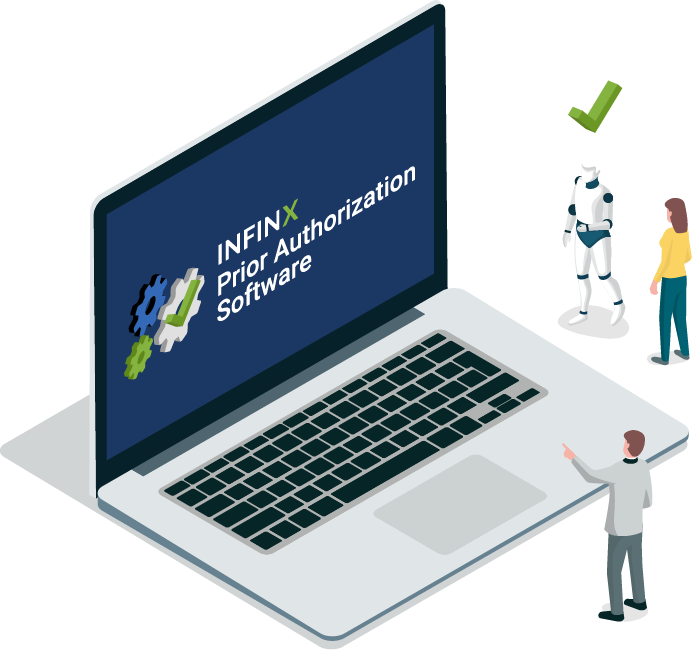
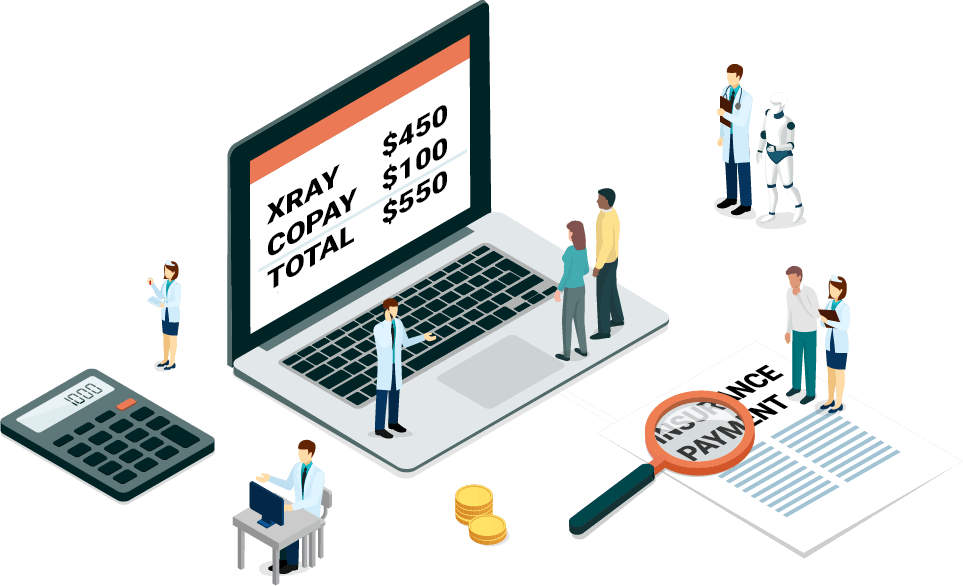
Patient Pay Estimates
Today, with rising costs and increasing HDHP coverage, 30% or more of healthcare costs may be the patient’s responsibility. Not only should your cardiology practice be compensated for the care you provide, but to be fair, the patient should be aware of their portion due before presenting for treatment. While there are always unforeseen circumstances that arise, a large percentage of costs can be well researched and pinpointed ahead of the actual visit.
It has long been customary for many practices to notify patients of pending amounts due as they arrive. It is often a shock to the individual and sets up an adversarial relationship from the start. But what if you are proactive in notifying your patients about payments ahead of an appointment and requesting payment at that time, thereby allowing them time to arrange or budget as needed?
This allows the patient to digest the amount, ask questions, research their insurance plan, and become an active participant in the process. It also encourages your staff to identify potential concerns and to offer arrangements that reinforce an obligation, such as 50% now-50% at the time of service or third-party financial plans.
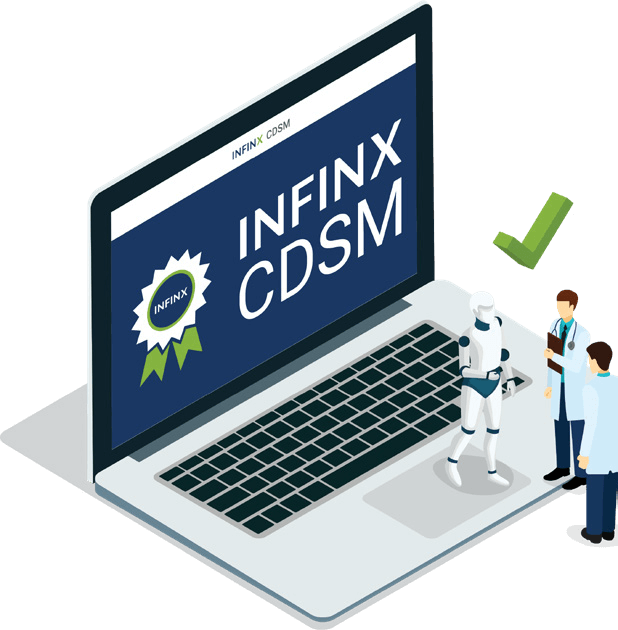
Clinical Decision Support Mechanism
CDSM has entered the education and operation testing phase lasting until the end of 2021 when it becomes mandatory. This new requirement requires changes to the diagnostic process to include consulting an Appropriate Use Criteria (AUC) database and generating compliance certificates for the radiology group providing advanced imaging testing for Medicareeligible patients. While inpatients and certain emergency patients are excluded from this change, all other Medicare patients fall into the CDSM category, whether in an outpatient or group practice setting.
The unique structure of the CMS-defined process presents challenges for the providers performing the tests since they are financially responsible to code claims based on having received the CDSM certificates from their ordering provider. However, they are relying on the ordering provider to consult the AUC and then generate and forward the actual certificates themselves by using a CMS qualified CDSM vendor8.
Bringing Automation and Artificial Intelligence to the Fore
With what’s available today, it’s important to define the three types of technology and outline how each could benefit the process of patient access flow. Using HL7 or API-based integration that guarantees 100% HIPAA compliance, functions are completed in real-time, followed up as necessary, and status automatically reported at completion.

• Automation – eases the redundant human burdens and mimics the actions of the workforce. Automation is being used to determine insurance eligibility, prior authorization, and patient responsibility for pre-collections.

• Analytics — digital data collection designed to enhance productivity through analyzing patterns,
trends, and statistical information. Data analytics are used to quantify outcomes based on performance and develop predictive scenarios to improve RCM results.

• Artificial Intelligence — by identifying patterns through computational analyses, AI can make
predictions that support and amplify those made by humans alone. For patient access, this means predicting risk and behavior and potential forecasting outcomes for RCM purposes.
Best Practices for Automating Patient Access Functions
The efficiencies recognized, and benefits enjoyed by automating each function within patient access during the onboarding process include increasing revenue captured, savings or redeployment of clinician and employee time, reduction in denied claims and follow-up, and a vast improvement to the patient experience.
Ensure Insurance Verification and Patient Eligibility for a Solid Base
Immediate verification of a patient’s eligibility is key to kicking off the entire reimbursement process. With automated eligibility and remaining benefits verification, your admissions professionals can proceed with efficient scheduling meeting the patient’s needs quickly. Additionally, insurance verification and eligibility through an automated software solution greatly reduces the administrative burden of manual verifications, and can be integrated with PA and patient pay functions.
Today’s automated processes allow the insurance to be verified before the patient’s visit and, again, when the patient arrives to ensure that no changes in eligibility have occurred and an up-to-date remaining deductible amount is obtained. The need for back-end collections is greatly reduced by collecting any amounts due at the start of the visit.
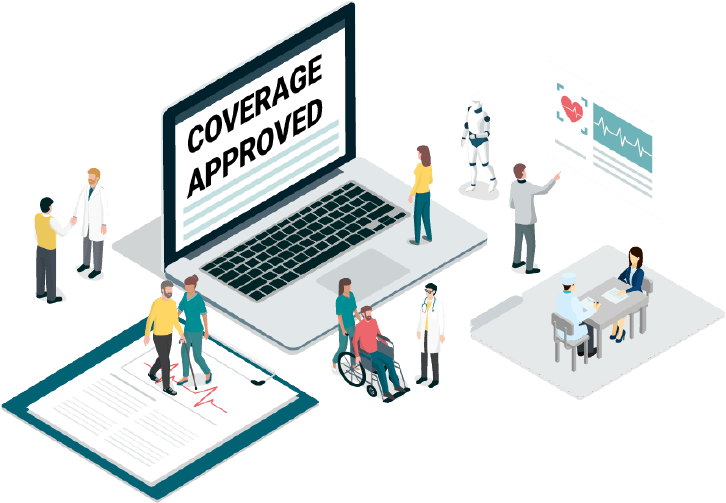
But there is another, equally important process that takes place during this initial scheduling phase – educating the patient on the practice’s financial policies, including payment expectations, cancellation policies, collections procedures, and missed appointment charges. It’s important to convey this information during the initial encounter to establish a solid foundation for an ongoing relationship with the patient.


Automate Prior Authorizations and Reduce the Headache
By automating the PA process, considerable time is saved by eliminating manual, burdensome workflow. AI-assisted technology brings intuitive and seamless processing of PAs in real-time with full transparency. This advanced technology allows requests to be submitted to the appropriate payer, monitored, and followed up intuitively, with alerts and notifications updated continuously.
With a deliberate and strategic approach, you can improve PAs and see benefits in the healthcare billing lifecycle workflow, including:
- PA’s processed in real-time
- Clarity in patient appointment scheduling
- Lower denial rates
- Increased revenue
- Improvements to AR and Days Outstanding
Obtaining PAs continues to be an ongoing struggle for most cardiology groups today. The process is labor-intensive and time-consuming, often requiring many hours of constant follow-up by your staff that takes time away from patient care.
With improvements in today’s technologies, bold new automated, AI-driven software options are implemented in cardiology groups around the country that are capable of processing PAs in real-time, eliminating inefficiencies in obtaining care and capturing revenue previously forfeited.
Don’t Let the Patient Portion Slip Away
Once your admissions professionals have secured a valid PA and verified eligibility through real-time automation, an electronically generated patient portion estimate becomes available, and patients can be informed of their financial obligation. At this point, the onboarding staff can proceed to collect the amount estimated to be due according to your well-defined financial policies, i.e., collection, payment plan, financing, etc.
This saves time and effort for your business team or your third-party partners by reducing the rework involved in collecting money after the fact. It also brings money owed to the bottom-line in a timely fashion.
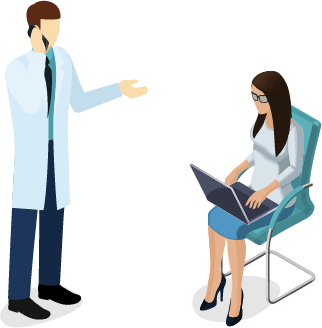
Don’t Let CDSM Create an Unnecessary Burden
The AUC program and CDSM were conceived as a process that would complement and elevate the referring provider’s diagnostic practice, strengthen the Medicare patient experience, and reduce unnecessary advanced image testing. The requirement impacts all physicians, APP, and facilities are billing Part B Services to Medicare9.
When reviewing and evaluating a comprehensive CDSM package from the CMS published list of approved vendors, consider a partner that offers these valuable components:
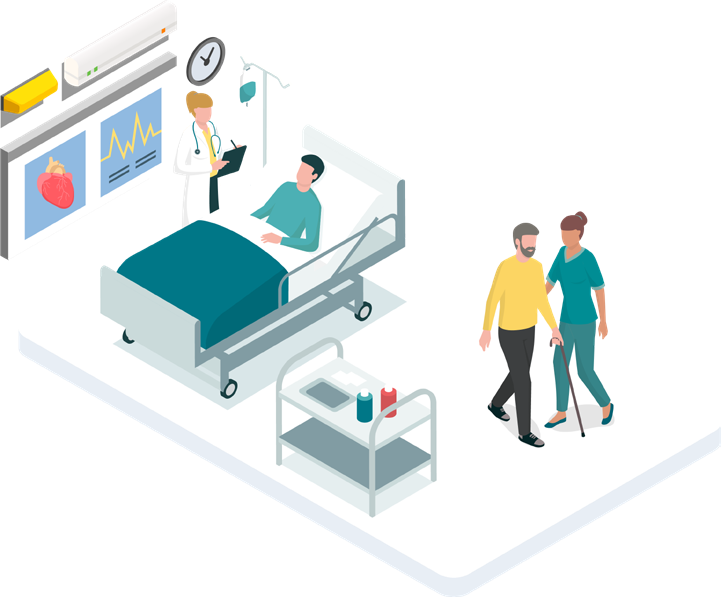
- A comprehensive and up-to-date library of AUC’s sourced from multiple Qualified Provider Lead Entities (qPLE’s)
- A bi-directional, integrated clinical dashboard that provides immediate access to current patient information for both furnishing and ordering physicians
- Coverage of all priority clinical areas as detailed by the CMS, including coronary artery disease (suspected or diagnosed), suspected pulmonary embolism, headache, hip pain, low back pain, shoulder pain (to include suspected rotator cuff injury), cancer of the lung (primary or metastatic, suspected or diagnosed)
- Ability to support referring providers within their EHR/EMR systems
- Ability to generate compliance certificates required for reimbursement
- A qPLE that meets all security requirements and HIPAA compliance standards
To restate, recognizing the challenges brought by the new CDSM, the CMS has extended the mandatory implementation date to January 1, 202210. This extension is intended to give both ordering and furnishing providers ample time to negotiate the technological and workflow challenges before there is a monetary impact.
In Summary
While many in cardiology feel they already have practical and extensive experience in onboarding patients, today’s technology offers improved and streamlined opportunities to assimilate patients efficiently. These automated solutions not only improve the patient’s experience during pre-registration but significantly impact RCM in a positive and worthwhile way to the end result—an improved bottom line.
Best-in-class options using AI-driven technology and predictive rules based on payor guidelines determine the next best action as well as implement a reimbursement strategy using the minimum of administrative effort but yield the maximum revenue capture. This allows providers and staff to commit to higher-level functions that genuinely improves the patient care continuum.
Let us demonstrate where your cardiology practice might gain revenue capture and overall efficiencies through our fullspectrum audit services where we review and define areas for change and participation. Enhanced Revenue Solutions by Infinx, provides comprehensive revenue cycle management support and services to health systems, hospitals, and physician practices.
To learn more about opportunities to improve RCM efficiencies through a third-party partnership utilizing AI-driven automation technology with experienced specialists, visit www.enhancedrevenuesolutions.com.
Thanks for reading. If you’d like to see the footnotes, please download this white paper as a pdf here.
About Infinx
Infinx provides innovative and scalable payment lifecycle solutions for healthcare practices. Combining an intelligent, cloud-based platform driven by artificial intelligence and automation, with our trained and certified prior authorization, coding and billing specialists, we help clients realize revenue, enabling them to shift focus from administrative details to billable patient care.
